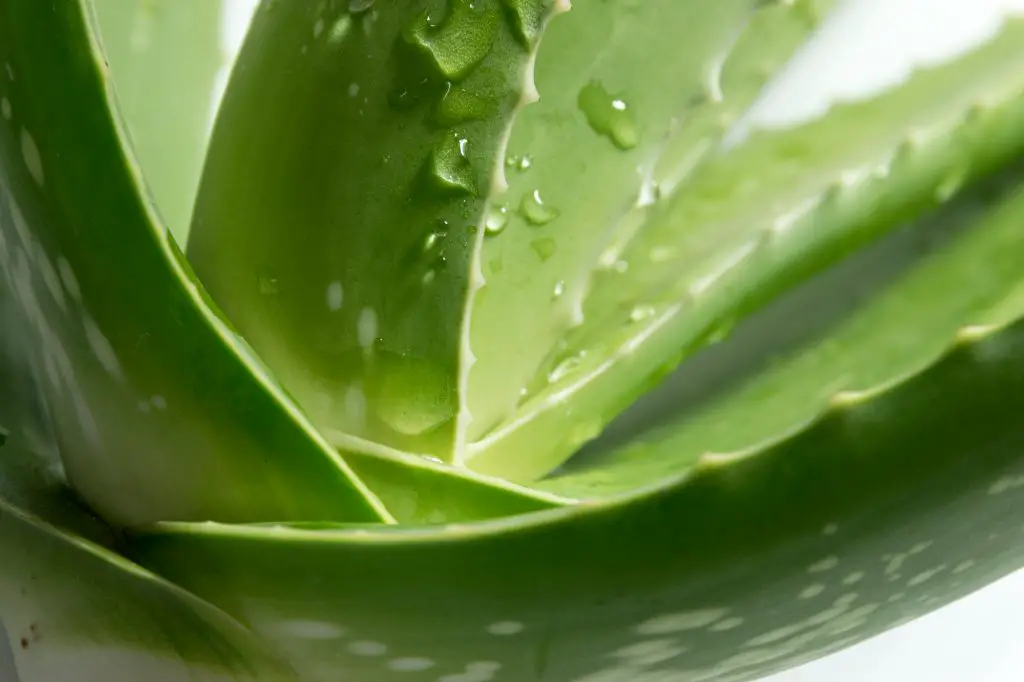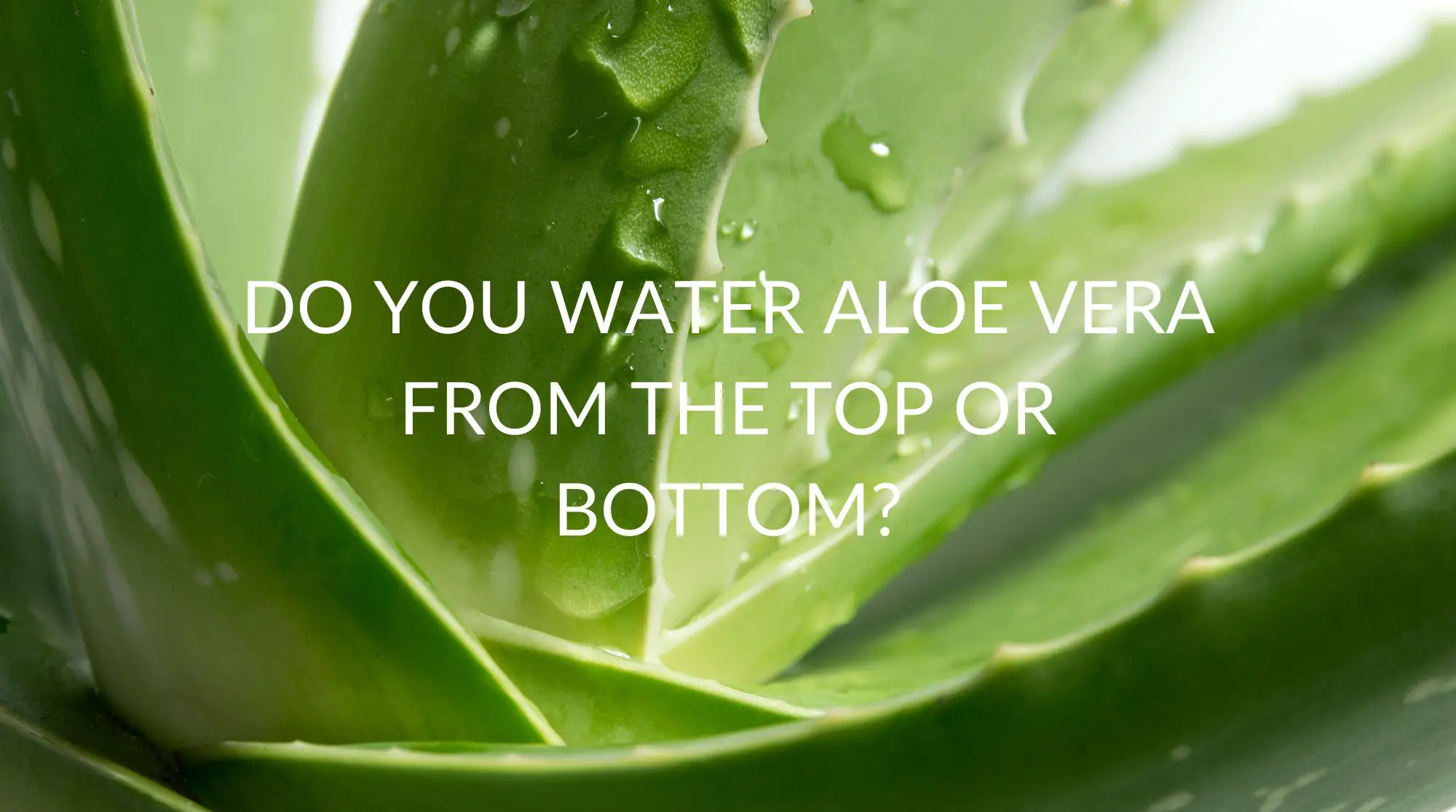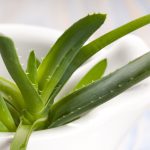Aloe vera is a useful plant for every home to have. Not only does aloe vera add some fresh, green life to a home, but it’s also useful for its medicinal benefits. That said, maintenance is key for keeping aloe in your space for as long as possible, such as watering it appropriately and watering the right part of the plant.
One common question many have surrounds how to properly water an aloe vera plant. While watering plants may seem like the simplest concept, watering an aloe vera plant improperly can do some damage.
How Should You Water Your Aloe Vera?
Aloe vera plants are particular about how they like to be watered. Technically, aloe vera is succulent, which for many people new to plants, there’s an incorrect assumption that these types of plants barely need any water. While this is partially true, they still need to be watered based on a schedule and with specific methods.
Water Your Aloe Vera Plant From The Bottom
It’s absolutely crucial that you pour water into the bottom of aloe vera plants and not just pour water over the plant. Watering at the bottom will guarantee that your aloe vera gets the right amount of water and can utilize it appropriately to keep itself moisturized and healthy.
Water Your Aloe Vera Plant Deeply
The water needs to be poured into the soil very deeply. A watering can with a long, thin neck tends to work best, so you have more control over the direction of the water flow. Water will travel through the soil into the aloe’s roots. It’ll also be much easier to tell when you’ve watered your aloe plant sufficiently.
Water Your Aloe Vera Plant Enough
The rule of thumb when watering aloe is to pour water into the soil very slowly, watching around the drainage holes. Once you start to see water trickle out from these holes, you’ll know you’ve given your aloe enough water for the next couple of weeks.
A suitable pot for this particular plant should have at least two drainage holes. Any excess water needs a place to travel out of so that it doesn’t seep into the plant itself, which can cause all sorts of illnesses for your aloe.

Use The Right Type Of Water
Not all water is created equal when it comes to what some plants prefer. Aloe vera likes distilled water the best, but you can also collect rainwater and store it for your aloe plant. Keep it in a container and when it comes time to water your aloe vera, take some water from that reserve.
Water from the tap, especially if it hasn’t been run through a filter, has more chlorine and fluoride than your aloe likes. Using it once in a while when you have nothing else is fine, but too much can cause some damage to your plant.
Pour Water Very Slowly
You want to use a steady hand when watering your aloe vera plant, as this will make it much easier to control the amount of water you use. This will also help you avoid drowning your plant in more water than it can handle. As mentioned, watering cans with thin, long necks will help you control your water pouring much better.
Water Your Aloe Less In Winter
Aloe vera plants tend to slow down in the winter as they are trying to protect themselves from the harshness of winter. If you live somewhere that experiences winter, you won’t have to water your aloe as much. It usually only needs about half the water it typically does throughout the rest of the year.
Why Is It So Important To Water Aloe Vera Plant From The Bottom?
Aloe vera isn’t a high-maintenance plant, but it does prefer to be watered from the bottom for a few important reasons. Neglecting to water your aloe vera this way isn’t going to do any good for your plant.
The Aloe Vera Root Needs Moisture
The root of an aloe vera runs deep into the soil. Pouring water into the bottom of the plant ensures that this root gets an adequate amount of moisture. That said, you don’t want to drown your plant.
The Root Needs The Water
When you’re watering a succulent such as aloe vera, it’s not the plant itself that needs direct contact with water. It’s actually the roots that need moisture, and the root will disperse water appropriately to the rest of the plant.
It’s Easier To Monitor Moisture Levels
Since watering from the bottom helps water spread through the plant properly, there’s a much better chance you’ll be able to more accurately monitor moisture levels for your aloe. This helps you test the soil to check if your plant needs more water or can do without for a couple more days.
Proper Watering Technique Fosters Proper Maturity
It is very important that you establish proper watering techniques with your aloe vera plant when you bring it home, especially if it’s still a baby plant. In order for the aloe root to spread itself properly throughout the soil, it needs enough water. This means concentrating water at the bottom of the plant is crucial.
You Can Avoid Damaging Your Aloe Vera Plant
Pouring water on top of your aloe plant can end up damaging the integrity of your plant’s leaves, which can ruin the look of it on top of the overall health of the plant. You might end up breaking some of the leaves, especially if your pour is too fast, or they might start to sag.
Why You Shouldn’t Water Aloe Vera Plants From The Top
You might think that watering your aloe from the top is just easier and quicker, but if you want your plant to live as long as possible, you won’t take shortcuts. There is no trick to making watering this particular plant from the top work for you.
Water Isn’t Dispersed Properly
When you pour water from the top of your aloe, there’s a strong chance you’ll just end up getting the aloe leaves wet and not much else. It’s very difficult to get proper control over how much water you use and where the water goes when pouring it on top of your aloe.
Water Doesn’t Travel Through Aloe Leaves
Water will just sit on aloe leaves and either evaporate or slowly drip off. The leaves don’t absorb the water well, and even if they do, they aren’t capable of sending water to the rest of the plant. Following the natural water pathways of a plant is the only way to make sure it gets watered properly.
It’s Harder To Prevent Overwatering
If you’re watering from the top and still manage to get the root moist, there’s a very good chance that you have overwatered your aloe. The root of the aloe will struggle to disperse water quickly enough, and the root will likely start to rot.
Your Aloe’s Root May Not Get Enough Water
On the other hand, if you water your aloe from the top and don’t manage to drown the plant, it’s likely that the root and soil are not getting enough water to keep your aloe plant healthy. Your aloe plant will start to dry out, which can harm your aloe just as easily as too much water can.
How Often Does Aloe Vera Need To Be Watered?
Generally speaking, an aloe vera plant will only need some water every two to three weeks. It can be fairly easy to overwater an aloe vera plant if you’re not keeping track of waterings. Because this plant falls into the succulent family, they are excellent at conserving water and making it last a long time.
One simple method to double-check if your aloe still has enough moisture is testing the soil with your finger. If you push your finger about one to two inches into the soil and the soil still feels wet, you can check back in a day or two to see if anything changes. There are water meters you can purchase as well that help you monitor water levels.
Since these plants can vary in size, yours may need more or less water depending on how big or small it remains. Additionally, the climate you live in will factor into how much water your aloe needs. Even if you keep your plant inside, the air and its moisture levels will still impact your indoor climate, thus impacting your aloe.
What Does An Overwatered Aloe Vera Plant Look Like?
It’s fairly easy to see when an aloe vera plant has had too much water. There are some visible signs you’ll notice. You’ll want to remedy an overwatered aloe vera as soon as you detect any of these signs so that it doesn’t start to rot and slowly wither away.
Discolored Aloe Leaves
Aloe leaves are supposed to be a lively green color. As such, when they start to look dull and change color, that’s a very strong indication that your aloe has been overwatered. Typically, overwatered aloe leaves will start to develop brown and yellow spots.
Soft And Saggy Aloe Leaves
Aloe plants typically have leaves that stand fairly tall and have a slight plumpness to them. They should be relatively firm when you squeeze the leaves. If they start to feel soft instead of firm and they look as though they are struggling to stand up, it’s a clear-cut sign of overwatering.
Swollen, Sad Aloe Leaves
If your aloe continues to get too much water, this swelling could start to dissipate. Leaves will start to wither and wilt, and they end up looking quite sad and droopy. Healthy aloe leaves should stand up on their own.
Moldy Soil
One important component of keeping healthy aloe plants is soil with good drainage. Even if you choose the right soil, too much water can’t make its way through the soil and plant roots well enough.
As such, mold can start to develop in soil. Mold usually appears as white, fuzzy spots sprinkled throughout the soil. At this point, you would have to remove your aloe plant from its pot and plant it in a new pot with fresh soil in order to salvage it.
Soil Looks Consistently Moist
It’s easy for an aloe plant to get too much water if it’s planted in improper soil or in a pot with inadequate drainage holes. You’ll be able to see this when looking down at your aloe vera plant and seeing that the water looks dark and moist, even when time has passed since it’s been watered. Touching the soil will also confirm this for you.
Soft Stem
An aloe vera plant’s stem should be plump, and there shouldn’t be too much give when you gently squeeze it. If you touch the stem and it feels like mush, you have definitely given your aloe too much water.
If the stem gets to this point, it’s likely that root rot isn’t too far off, and this can end up killing your aloe plant if it’s not taken care of right away. Root rot manifests in soggy, mushy roots that get dark in color, and it can spread throughout the rest of your aloe plant if it’s not taken care of right away.
Recap
Plenty of plant lovers know the benefits of having aloe vera plants in their homes. If you want to keep that plant in your home for as long as possible, watering it appropriately and using the right technique is paramount. The best way to water aloe vera properly is by watering the plant from the bottom.
Improper watering, the watering method used, and the type of water used can all lead to an unhappy aloe plant. There are ways to revive aloe plants that are starting to wither, but it’s much easier to just simply cater to these plants’ needs. That way, you’ll have a lush, vibrant green plant to add life to your home for many years.







